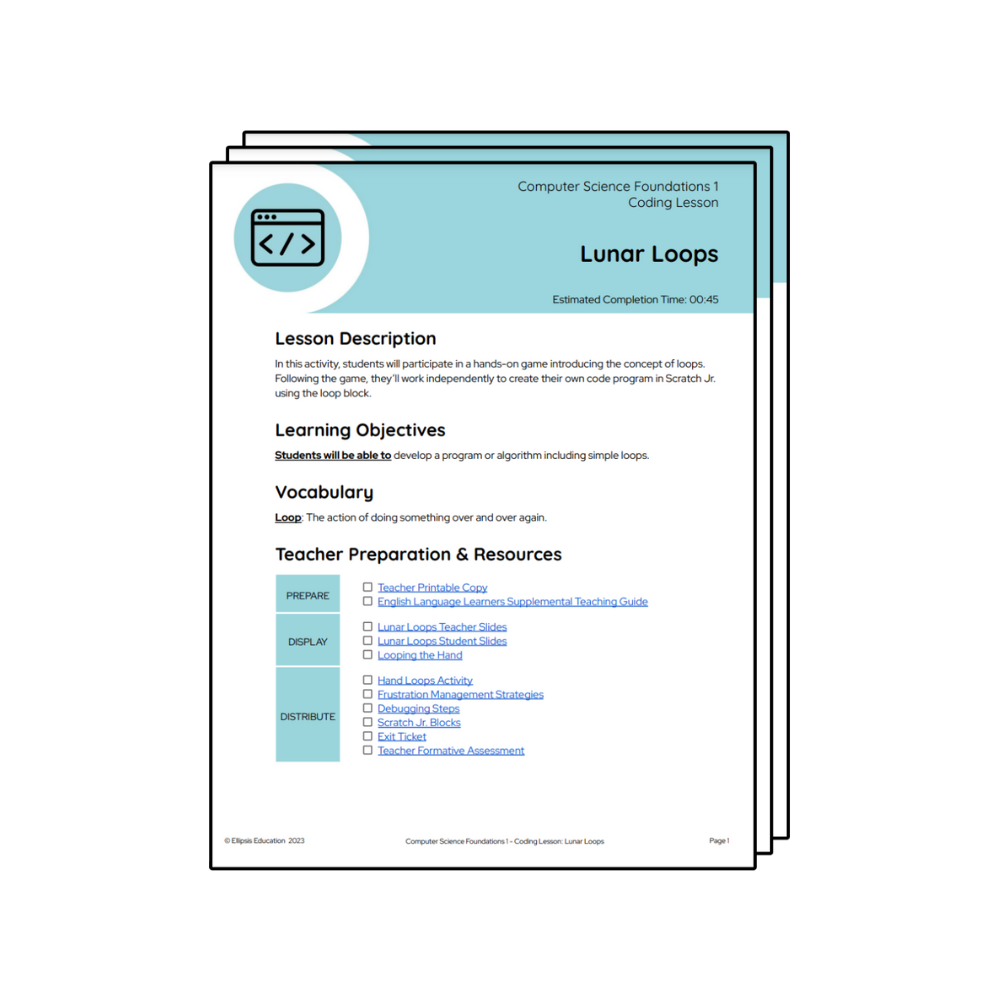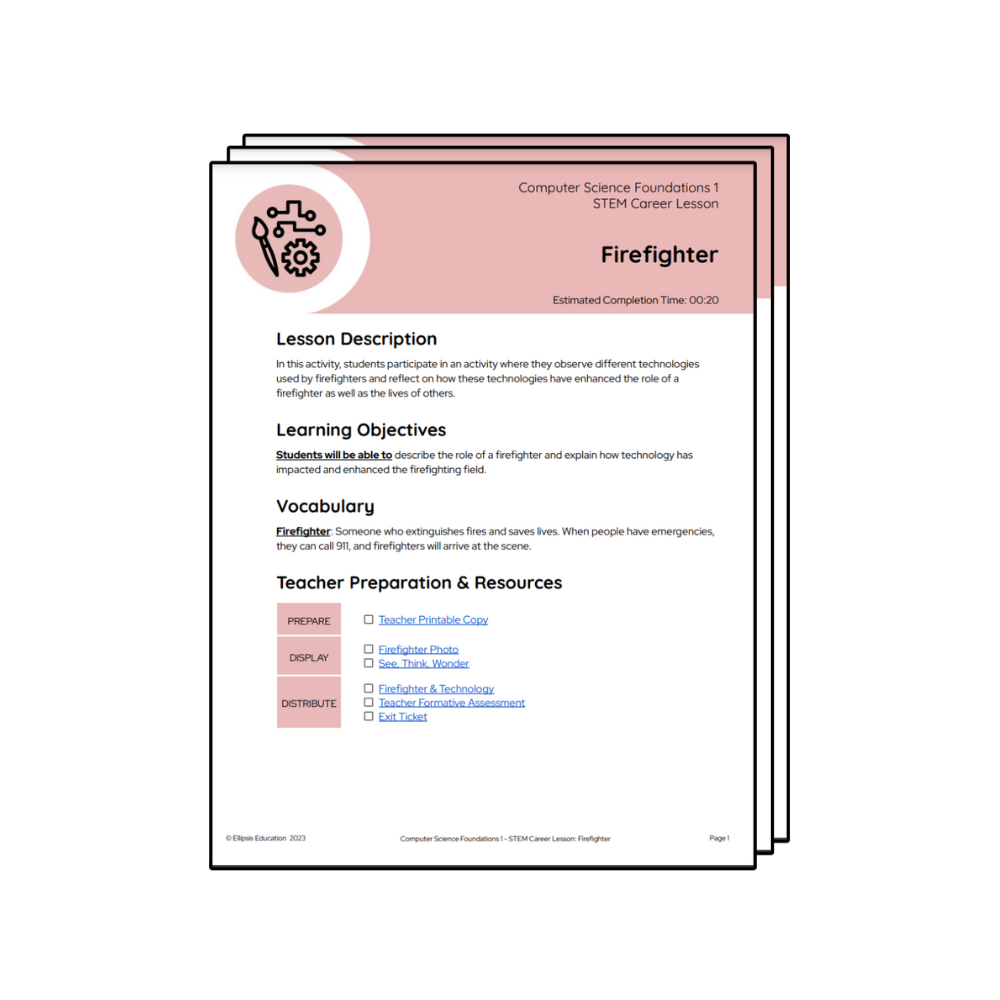Computational Thinking Activities For Kindergarten
Computational thinking is an important skill, and it can start as early as kindergarten! Ellipsis Education has computer science curriculum for pre-readers. Our lessons help develop the attitudes, knowledge, and skills necessary to thrive, even for our young learners.
Ellipsis Computational Thinking Curriculum

Any Teacher Can Teach
From scripted lesson plans to robust training to continuous learning, Ellipsis helps teachers build confidence and capacity.

Everything in One Place
The Curriculum Delivery Platform houses all your computer science lessons – no more piecing together free resources.

Teacher-Led
Just like any reading or math curriculum, Ellipsis leverages your best resource: teachers.

Beyond Coding
Ellipsis lessons develop the attitudes, knowledge, and skills necessary to thrive – in academic settings and beyond.
Computational Thinking Activities for Kindergarten
Download a free lesson plan from Ellipsis Education to use in your kindergarten classroom.

Lunar Loops
In Lunar Loops, students will participate in a hands-on game introducing the concept of loops.

Firefighter
In Firefighter, students will learn about the technologies that firefighters use in their role.
Ready to develop your kindergarteners’ computational thinking skills?
Computer science courses from Ellipsis Education can help. We ensure teachers have the curriculum, resources, and support they need to confidently teach computer science – and computational thinking.
